World’s rockets on pace for record year of launch activityJuly 6, 2022 Stephen Clark [SFN]
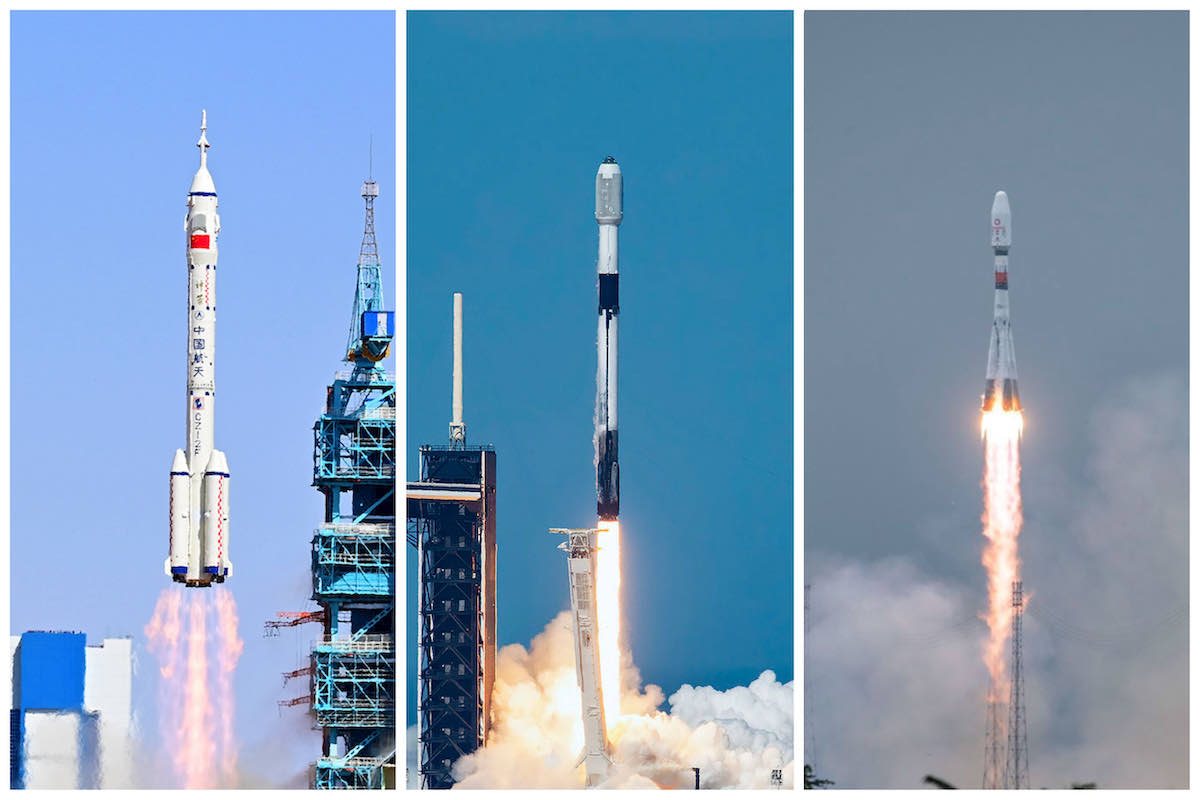 From left to right: A Chinese Long March 2F rocket launches June 4 with the Shenzhou 14 astronaut mission; A SpaceX Falcon 9 rocket launches Feb. 3 with a batch of Starlink internet satellites on Feb. 3; A Soyuz rocket launches Feb. 10 with a cluster of OneWeb internet satellites. Credit: Xinhua/SpaceX/Arianespace
From left to right: A Chinese Long March 2F rocket launches June 4 with the Shenzhou 14 astronaut mission; A SpaceX Falcon 9 rocket launches Feb. 3 with a batch of Starlink internet satellites on Feb. 3; A Soyuz rocket launches Feb. 10 with a cluster of OneWeb internet satellites. Credit: Xinhua/SpaceX/ArianespaceIf it feels like there are more rockets launching into orbit than ever before, it’s not just you. The world’s launch operators, led by SpaceX and China’s state-run enterprises, launched 72 missions into orbit in the first half of 2022, on pace to break last year’s record of 135 orbital deliveries.
https://spaceflightnow.com/2022/07/06/worlds-rockets-on-pace-for-record-year-of-launch-activity/ABL static fires rocket for first orbital launch attemptby Jeff Foust — July 12, 2022 [SN]
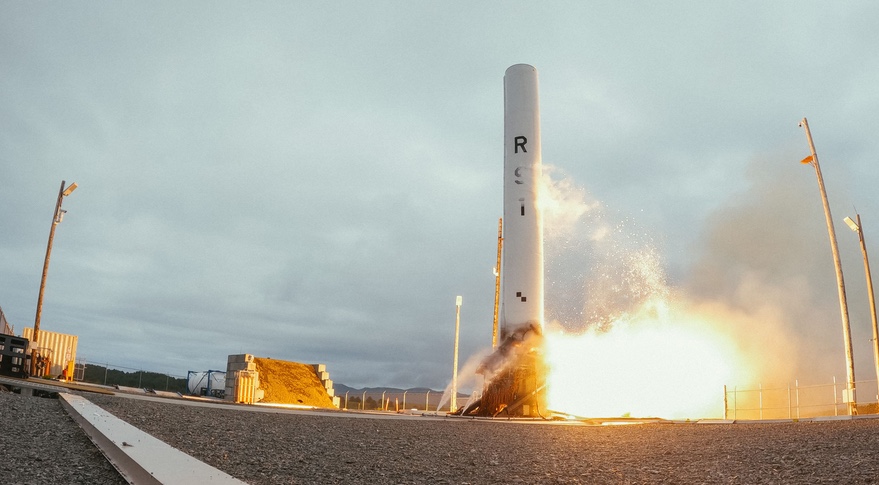 ABL Space Systems conducted a static-fire test of the first stage of its RS1 rocket at Kodiak Island, Alaska, July 9. Credit: ABL Space Systems
ABL Space Systems conducted a static-fire test of the first stage of its RS1 rocket at Kodiak Island, Alaska, July 9. Credit: ABL Space SystemsWASHINGTON — ABL Space Systems successfully test-fired the rocket it plans to launch on the company’s first flight in the next several weeks.
Company executives said that they performed the static-fire test of the first stage of its RS1 rocket July 9 at the Pacific Spaceport Complex – Alaska on Kodiak Island, the site where the company plans to conduct its first launch.
https://spacenews.com/abl-static-fires-rocket-for-first-orbital-launch-attempt/Vega C lifts off on maiden flightby Jason Rainbow — July 13, 2022 [SN]
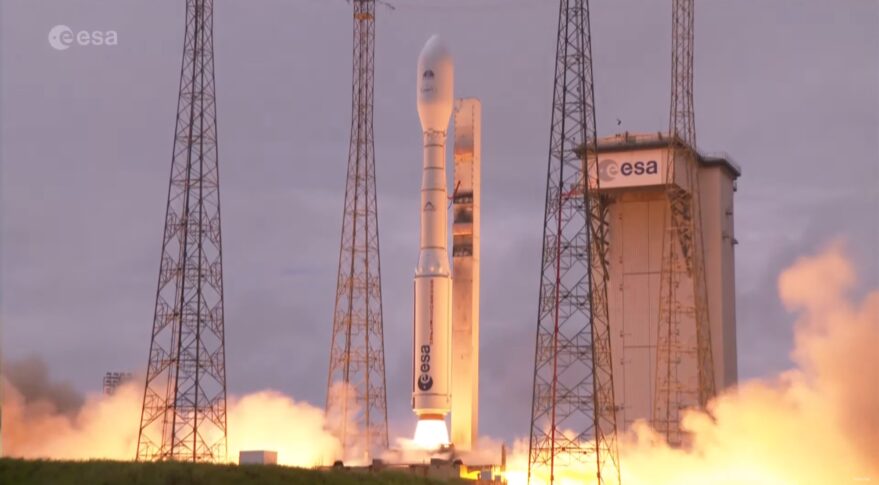 Europe's next-generation Vega C rocket launched July 13 on its maiden flight. Credit: ESA webcast
Europe's next-generation Vega C rocket launched July 13 on its maiden flight. Credit: ESA webcastTAMPA, Fla. — Europe’s new Vega C medium-lift rocket lifted off on its maiden flight July 13, carrying an Italian physics satellite and six cubesats.
The four-stage rocket launched from Kourou, French Guiana, at 9:13 a.m. Eastern at the end of a two-hour launch window. Technical issues had twice halted the countdown sequence.
Italy’s 295-kilogram Laser Relativity Satellite-2, or LARES-2, is the primary payload and was placed in an unusual inclined orbit at 5,893 kilometers to test Einstein’s theory of General Relativity.
https://spacenews.com/vega-c-lifts-off-on-maiden-flight/Firefly gears up for second Alpha launchby Jeff Foust — July 17, 2022 [SN]
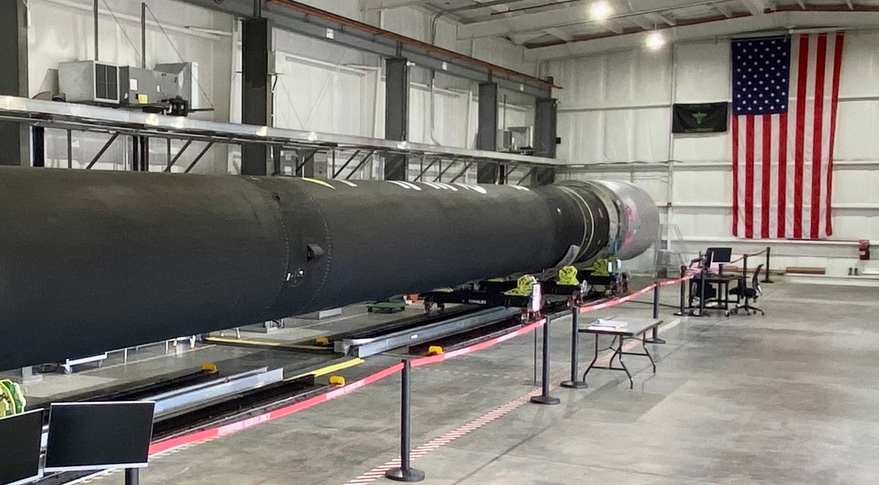 The second Alpha rocket by Firefly Aerospace is in a hangar at Vandenberg Space Force Base awaiting launch in late August or early September. Credit: Firefly Aerospace
The second Alpha rocket by Firefly Aerospace is in a hangar at Vandenberg Space Force Base awaiting launch in late August or early September. Credit: Firefly AerospaceWASHINGTON — Firefly Aerospace is preparing for the second launch of its Alpha rocket in late August or early September, hoping that a successful mission can enable a “step change” in activity for the company.
The second Alpha rocket is currently at the company’s launch site at Vandenberg Space Force Base in California as the company makes final preparations for the launch. The first Alpha rocket launched from there in September 2021 but failed to reach orbit when one of its first first-stage engines shut down shortly after liftoff.
https://spacenews.com/firefly-gears-up-for-second-alpha-launch/The Great British Lift-Offby Jeff Foust — July 19, 2022 [SN]
 Orbex indicated in May that the first orbital launch of Prime, carrying an experimental payload for smallsat manufacturer Surrey Satellite Technology Ltd., could take place late this year or early next year. Credit: Orbex
Orbex indicated in May that the first orbital launch of Prime, carrying an experimental payload for smallsat manufacturer Surrey Satellite Technology Ltd., could take place late this year or early next year. Credit: OrbexAt the last Farnborough International Airshow in 2018, the United Kingdom started the countdown to the first orbital launch from the country. The U.K. Space Agency announced it selected a site near the town of Sutherland in northern Scotland to host a vertical launch facility, and awarded $38 million to two companies to perform launches there. Other launch companies and prospective spaceports also announced plans to develop and launch rockets in the county.
https://spacenews.com/the-great-british-lift-off/ULA’s Atlas 5 rocket moved to launch pad with U.S. military missile warning satelliteAugust 2, 2022 Stephen Clark [SFN]
 ULA’s Atlas 5 rocket rolls out to Space Launch Complex 41 on Tuesday at Cape Canaveral Space Force Station. Credit: United Launch Alliance
ULA’s Atlas 5 rocket rolls out to Space Launch Complex 41 on Tuesday at Cape Canaveral Space Force Station. Credit: United Launch AllianceUnited Launch Alliance’s next Atlas 5 rocket rolled out to its launch pad Tuesday at Cape Canaveral for a fiery blastoff at dawn Thursday with a U.S. military missile warning satellite.
https://spaceflightnow.com/2022/08/02/ulas-atlas-5-rocket-moved-to-launch-pad-with-u-s-military-missile-warning-satellite/Final SBIRS missile warning satellite ready for launchAugust 2, 2022 Stephen Clark [SFN]
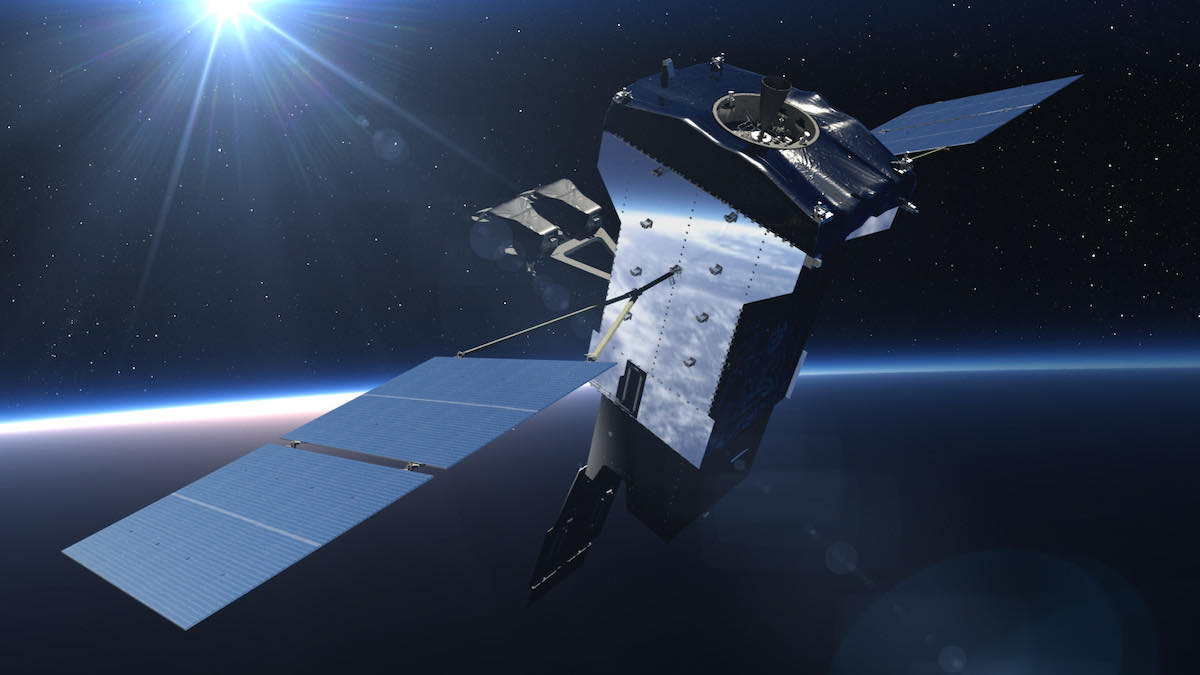 Artist’s concept of the SBIRS GEO 6 satellite in orbit, with its solar arrays extended. Credit: Lockheed Martin
Artist’s concept of the SBIRS GEO 6 satellite in orbit, with its solar arrays extended. Credit: Lockheed MartinThe last in a line of six satellites for the U.S. military’s Space Based Infrared System, or SBIRS, missile warning program is ready for launch Thursday from Cape Canaveral on top of a United Launch Alliance Atlas 5 rocket.
https://spaceflightnow.com/2022/08/02/final-sbirs-missile-warning-satellite-ready-for-launch/Cape Canaveral on the cusp of new records amid blistering launch rateAugust 3, 2022 Stephen Clark [SFN]
 A SpaceX Falcon 9 rocket heads downrange after a Jan. 31 launch from Cape Canaveral Space Force Station. Credit: SpaceX
A SpaceX Falcon 9 rocket heads downrange after a Jan. 31 launch from Cape Canaveral Space Force Station. Credit: SpaceXWith two rockets from industry rivals United Launch Alliance and SpaceX ready for liftoff just 12 hours apart Thursday, the Cape Canaveral spaceport is poised to surpass the record for most missions in a year to fly into orbit from its launch pads. The launch day doubleheader would also mark the shortest span between two space launches from Florida’s Space Coast since 1967.
https://spaceflightnow.com/2022/08/03/cape-canaveral-on-the-cusp-of-new-records-as-blistering-launch-rate-continues/ULA launches U.S. Space Force’s last SBIRS missile warning satelliteAugust 4, 2022 Stephen Clark [SFN]
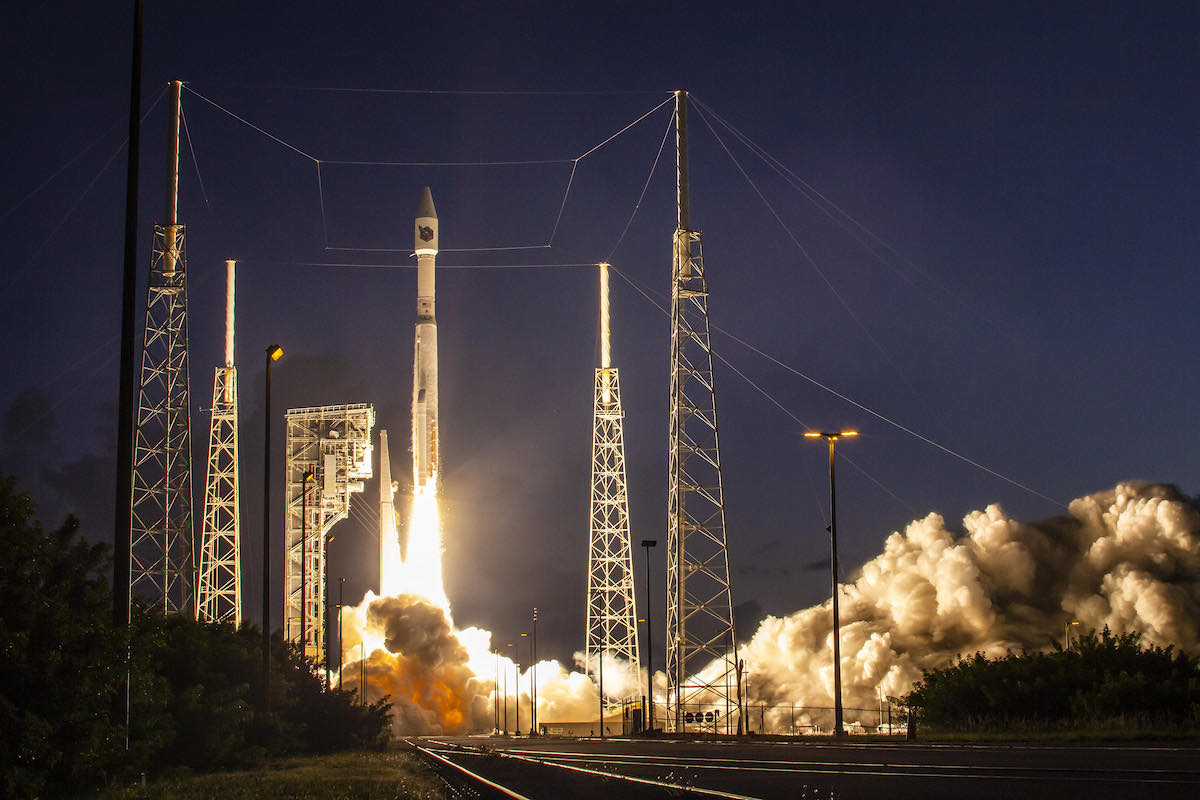 ULA’s Atlas 5 rocket lifts off from Cape Canaveral Space Force Station Credit: United Launch Alliance
ULA’s Atlas 5 rocket lifts off from Cape Canaveral Space Force Station Credit: United Launch AllianceThe departure at dawn of a United Launch Alliance Atlas 5 rocket from Cape Canaveral Thursday sent aloft the U.S. military’s last Space Based Infrared System missile warning satellite, a $1.2 billion mission billed by the Space Force as a stepping stone to a new generation of more sensitive sentinels in the sky.
https://spaceflightnow.com/2022/08/04/ula-launches-u-s-space-forces-last-sbirs-missile-warning-satellite/Photos: Cape Canaveral’s first launch doubleheader in more than 50 yearsAugust 10, 2022 Stephen Clark [SFN]
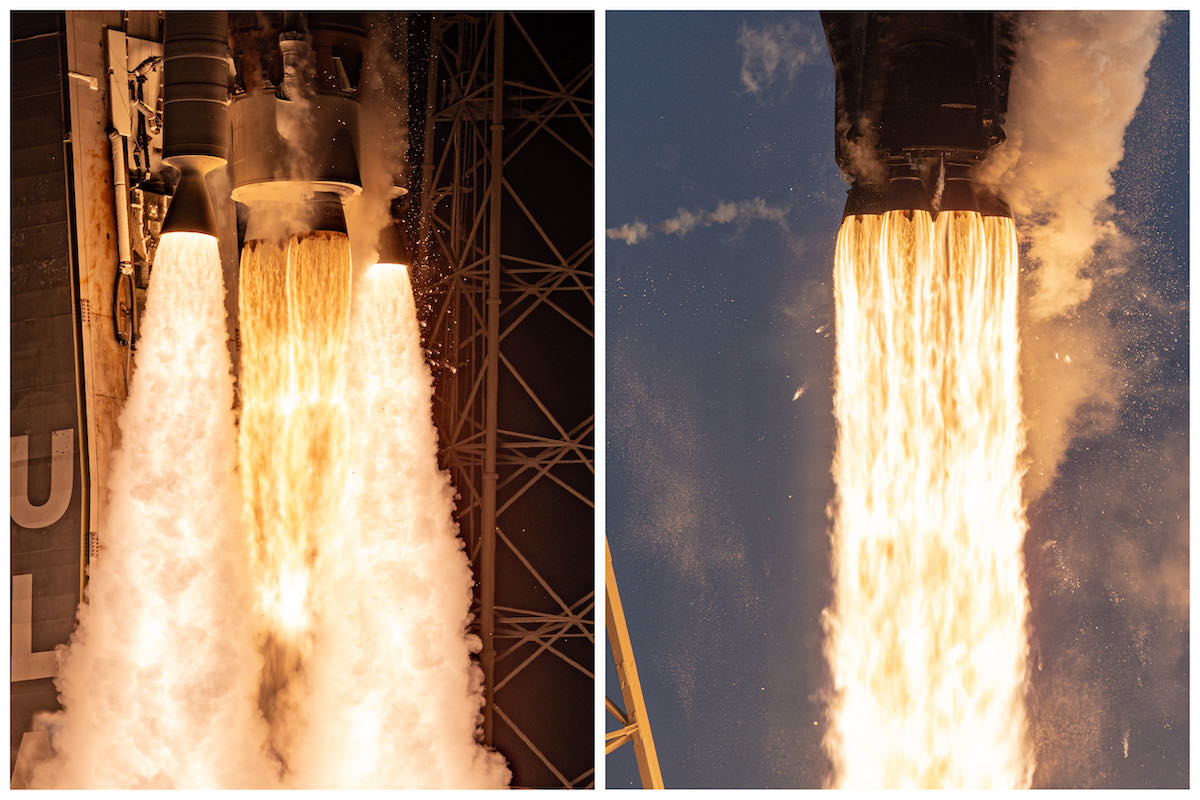 Left: A United Launch Alliance Atlas 5 rocket lifted off at 6:29 a.m. EDT (1029 GMT) on Aug. 4 from pad 41 at Cape Canaveral Space Force Station with the U.S. military’s SBIRS GEO 6 missile warning satellite; Right: A SpaceX Falcon 9 rocket lifts off from pad 40 at 7:08 p.m. EDT (2308 GMT) on Aug. 4 with the Korea Pathfinder Lunar Orbiter mission. Credit: Michael Cain / Spaceflight Now / Coldlife Photography
Left: A United Launch Alliance Atlas 5 rocket lifted off at 6:29 a.m. EDT (1029 GMT) on Aug. 4 from pad 41 at Cape Canaveral Space Force Station with the U.S. military’s SBIRS GEO 6 missile warning satellite; Right: A SpaceX Falcon 9 rocket lifts off from pad 40 at 7:08 p.m. EDT (2308 GMT) on Aug. 4 with the Korea Pathfinder Lunar Orbiter mission. Credit: Michael Cain / Spaceflight Now / Coldlife PhotographyThe launch of a SpaceX Falcon 9 rocket Aug. 4 occurred 12 hours and 39 minutes after the liftoff of a United Launch Alliance Atlas 5 rocket at Cape Canaveral Space Force Station, the shortest turnaround between two orbital-class missions at the Florida spaceport since Sept. 7 and 8, 1967.
https://spaceflightnow.com/2022/08/10/photos-cape-canaverals-first-launch-doubleheader-in-more-than-50-years/Penultimate Delta rocket to launch next month on ULA’s first mission of 2023March 22, 2023 Stephen Clark [SFN]
 ULA’s Delta 4-Heavy rocket lifted vertical on pad 37B at Cape Canaveral ahead of launch on the NROL-68 mission. Credit: United Launch Alliance
ULA’s Delta 4-Heavy rocket lifted vertical on pad 37B at Cape Canaveral ahead of launch on the NROL-68 mission. Credit: United Launch AllianceUnited Launch Alliance’s second-to-last Delta 4-Heavy rocket is scheduled to blast off from Cape Canaveral April 20 with a classified cargo for the U.S. government’s spy satellite agency, a mission that will mark ULA’s first flight of the year, officials announced this week.
https://spaceflightnow.com/2023/03/22/penultimate-delta-rocket-to-launch-next-month-on-ulas-first-mission-of-2023/